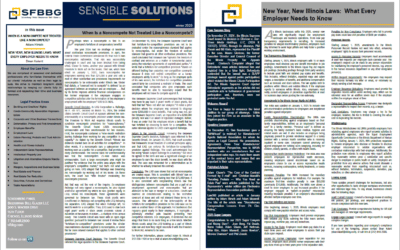Question: Any suggestions on how to deal with the new rules on accelerated distributions for inherited IRAs?
Answer: Planning opportunities remain despite the new tax law. The Setting Every Community up for Retirement Enhancement Act of 2019 (the “Secure Act”) put a damper on a meaningful tax benefit for recipients of inherited individual retirement accounts (“IRAs”). Non-spouse beneficiaries of a decedent’s IRA (an “inherited IRA”) must now generally withdraw funds from the deceased owner’s IRA over a period of not more than ten (10) years, measured from the date of the decedent’s death. Gone are the days when children and other non-spouse beneficiaries could take inherited IRA distributions over a beneficiary’s remaining life expectancy, so-called stretch IRA distributions. Prior to the Secure Act provision which is effective for decedents dying after December 31, 2019, applicable distribution rules enabled a decedent’s child or another person significantly younger than the decedent to take prolonged distributions from an IRA after the decedent’s death and permit a substantial amount of funds to remain in the IRA and grow on a tax deferred basis.
Meaningful tax deferral opportunities remain for inherited IRA beneficiaries who are the deceased IRA owner’s minor children and certain other beneficiaries. The 10-year distribution period does not commence for minor children of the deceased IRA owner until the time the child attains the age of majority. This exception does not apply to just any minor who is the beneficiary of an inherited IRA; the exception only applies if the minor is a child of the deceased IRA owner. Exceptions to the 10-year rule also apply where the deceased IRA owner’s beneficiary is disabled or chronically ill.
Some creativity in choosing your IRA beneficiaries can provide tax deferral opportunities. Another exception from the 10-year distribution requirement is a beneficiary who is no more than ten years younger than the IRA owner. So if an IRA owner has two persons who are intended beneficiaries of his estate, one more than ten years younger than the IRA owner and one less than ten years younger, a lengthier distribution may be afforded the beneficiary who is less than ten years younger. To rectify an unintended inequity in equally dividing the estate between the two beneficiaries, the IRA owner can leave other assets to the younger of the estate beneficiaries. Similarly, if an IRA owner has two beneficiaries, one in a high tax bracket and the other in a low tax bracket, the IRA might best be left to the less wealthy beneficiary on whom the tax burden will have a lesser impact.
While your question speaks to inherited IRAs, it is worth mentioning that for married IRA owners, the most common and perhaps best deferral opportunity is designating a surviving spouse as beneficiary. A decedent’s surviving spouse, unlike other IRA beneficiaries, can transfer or roll over the deceased spouse’s IRA to the surviving spouse’s IRA who can then withdraw funds from the account over the surviving spouse’s life expectancy.
There is also a beneficial aspect to the curtailment of stretch IRA distributions. For decedents dying prior to January 1, 2020, beneficiaries opting for stretch IRA distributions were required to take distributions annually commencing with the calendar year following the year of the decedent’s death. The Secure Act only requires that the decedent’s IRA be withdrawn by the tenth year following the calendar year of the decedent’s death. This permits an inherited IRA beneficiary to take equal or unequal distributions, to accelerate distributions or postpone distributions, so long as the account is withdrawn in full by the end of the 10-year period. Accordingly, the beneficiary can take advantage of low tax years by withdrawing larger amounts from the IRA in those years or perhaps leave the account fully intact for the full distribution period and permit ten years of tax-free growth to substantially increase the account balance. Each beneficiary’s personal tax situation will vary and the appropriate strategy should be selected based on each beneficiary’s circumstances.
While the Secure Act provision is relatively straightforward, it has far reaching implications. The conversion of existing IRAs to Roth IRAs may become a more popular strategy for IRA owners who do not wish to saddle their beneficiaries with increased tax obligations. IRA owners who have provided for trusts to receive and hold their IRA assets will need to review the trust terms to determine if the trust beneficiary is still the beneficiary of choice in light of the accelerated distribution requirement.
The Tax Corner addresses various tax, estate, asset protection and other business matters. Should you have any questions regarding the subject matter or if you have questions you want answered, you may contact Bruce at (312) 648-2300 or send an e-mail to Bruce Bell.



